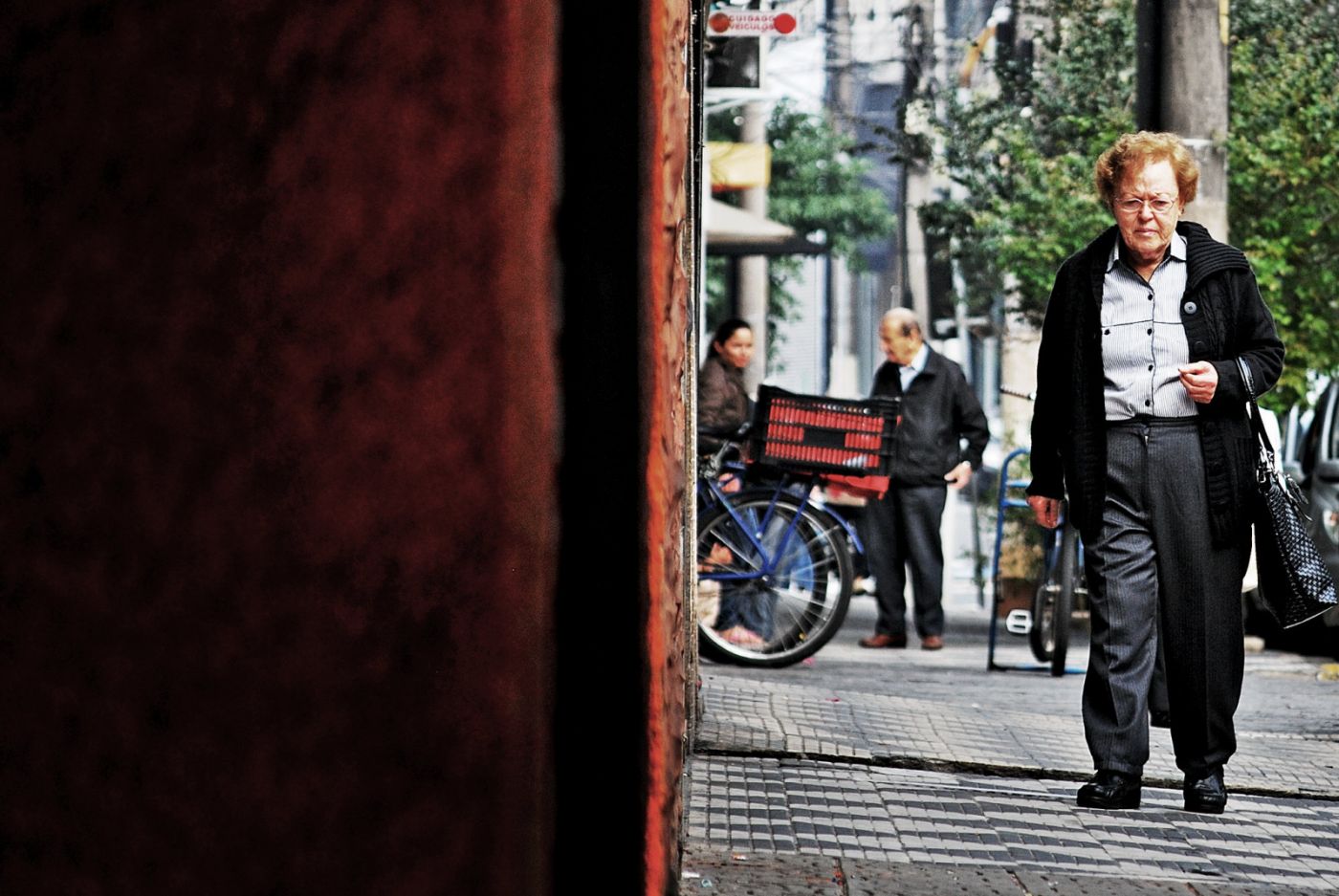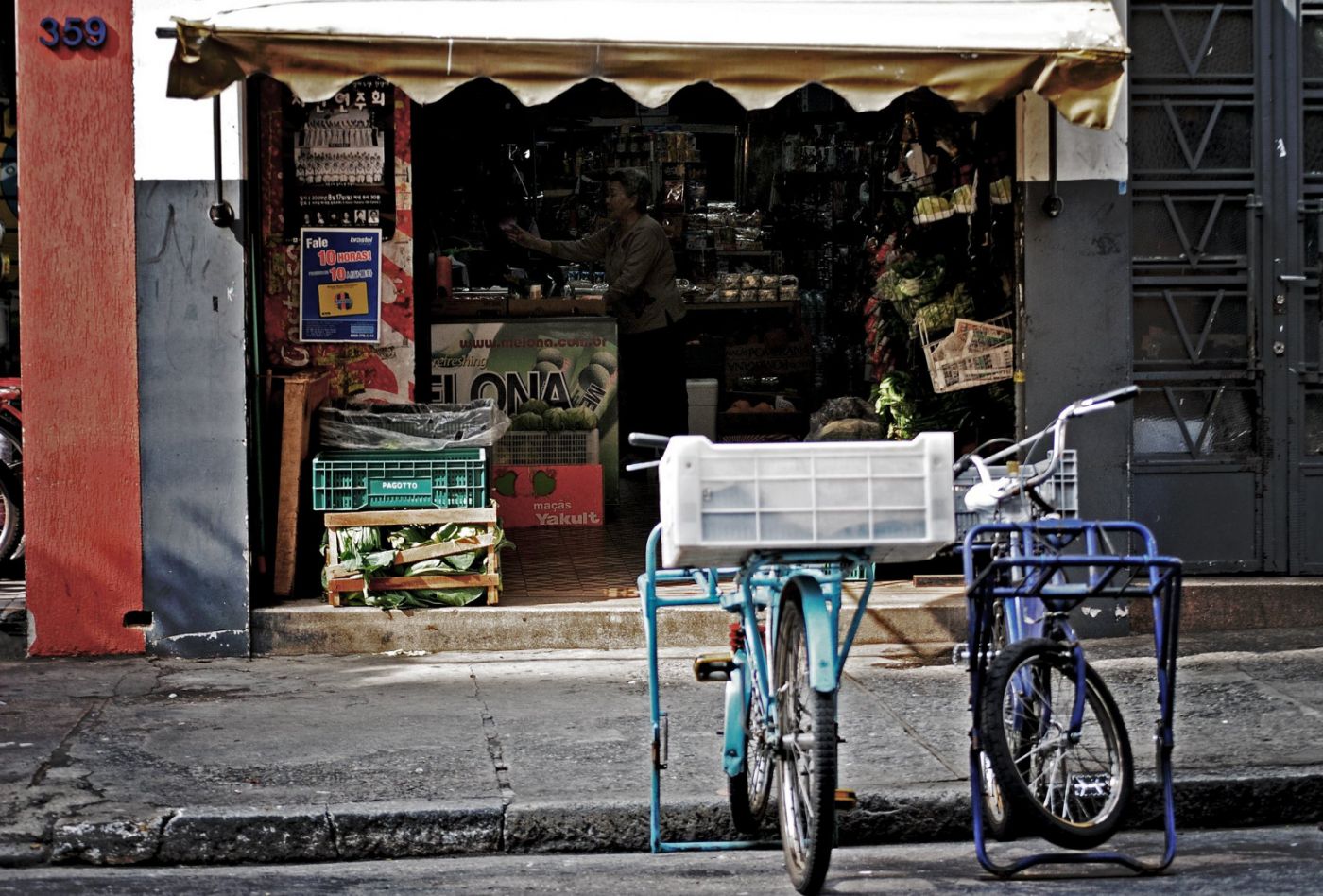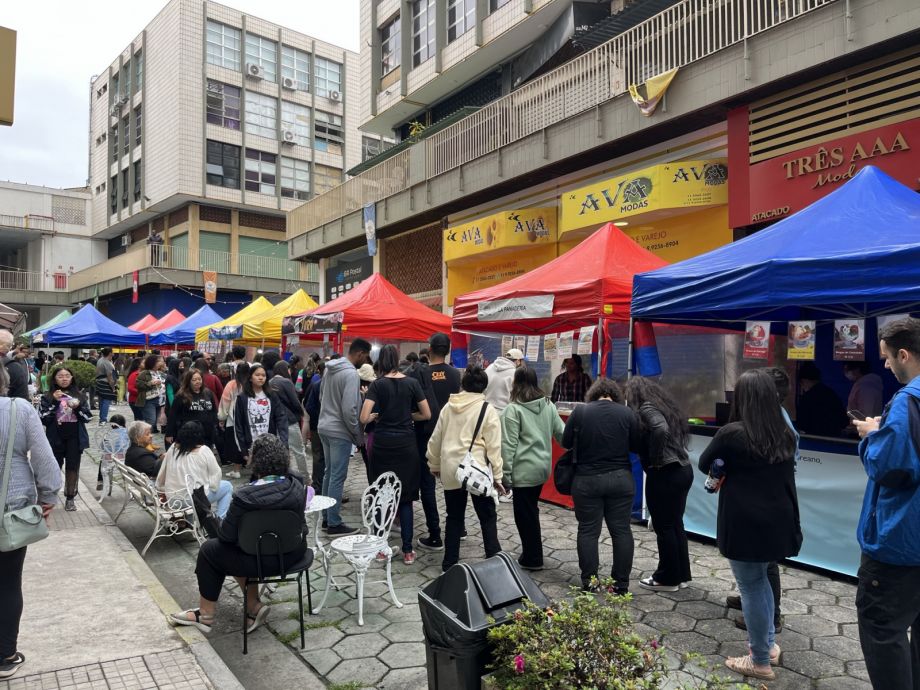Are You A Vanguard? Applications Now Open
Jakob Reipschlager
This is your first of three free stories this month. Become a free or sustaining member to read unlimited articles, webinars and ebooks.
Become A MemberBom Retiro wasn’t always a K-pop hub.
The central neighborhood in São Paulo has for decades been home to hundreds of businesses run by the community’s small concentration of Korean immigrants, but it wasn’t until recently that this once-degraded area became popular among fans of Korean pop culture. Teens and young adults have been flocking to the region searching for the products they see their K-pop idols consuming on screen: from face masks and colorful sodas, sold in supermarkets, to dishes like tteokguk and bibimbap, available at restaurants and food stalls in the area.
Cafes, bars and supermarkets are riding this global wave of interest in South Korean culture – driven by cultural exports such as pop music groups BTS and BlackPink, K-dramas and films such as “Parasite” – and investing in K-pop related products to attract the new clientele.
“For people who watch Korean drama and Korean reality shows, we have that desire to taste a little of the culture, and here there are places where you can introduce yourself to that,” says Kamile Monteiro, a 20-year-old student and K-pop fan.

Mural depicting Korean culture at Rua José Paulino. (Photo by Patrícia Figueiredo)
São Paulo’s Korean consulate has fully embraced the movement, trying to frame Bom Retiro as a new Koreatown. Now, it’s aiming to fund renovations to promote the country’s culture in the area, such as a controversial project for replacing the street lighting with Korean-inspired lanterns. Last year, one of the main streets in the quarter, Rua Prates, was renamed Rua Prates-Coreia – Portuguese for Korea. The consulate has also proposed a bill to change the name of the local metro station from Tiradentes to Tiradentes-Coreia do Sul.
For the head of São Paulo’s Korean consulate, Insang Hwang, their projects are a common-sense evolution of the Korean presence in Bom Retiro over the past years. “This is a natural way to actually recognize the immigrant origins [of Bom Retiro],” he says. For a decade, the local Korean community has been demanding such name changes to recognize their contributions to the neighborhood.
Plus, he says, the proposal makes economic sense for all residents: “If you put Korea in the name of the subway station, it will bring more people and more businesses.”
But not all residents are happy with those changes, and some of them are fighting back against what they see as an attempt to erase other cultures present in the region.

Bom Retiro in 2009. (Photo by Eduardo M. / CC BY-SA 2.0)
Bom Retiro’s urbanization process started with the arrival of Italian immigrants around 1880. Most came to Brazil to work in factories, and many settled around downtown São Paulo.
From the 1920s onwards, numerous Jewish families also arrived in Bom Retiro, mostly coming from Eastern Europe, says researcher Oswaldo Truzzi, a pioneering Brazilian sociologist who studied the composition of the neighborhood. According to a census from 1934, the Jewish community made up to 40% of the population in some portions of the district, Truzzi writes in an article on this multiethnic neighborhood.
Korean immigration in the area only started around 1970, but they soon dominated the businesses. According to Truzzi, many Jews had no heirs to help them run their business. They therefore saw in the new Korean immigrants an opportunity to pass on their clothing stores and factories. Nowadays, around 80% of the companies registered in Bom Retiro are owned by Koreans, according to a local retailers’ association.
Most of the employees of these companies, however, are Bolivian or Paraguayan immigrants, or Brazilians from the northeast and other parts of the country, who moved to São Paulo in search of better jobs.
All of these different cultures are present nowadays in Bom Retiro. The project for changing the street lighting to Korean-inspired lamps was therefore one of the most polarizing proposals in the neighborhood in recent years.
“We constantly acknowledge that our criticism should not be, in any way, directed against the Korean community,” says architect Gabriel Neistein. He and a number of other locals formed the Bom Retiro É O Mundo collective to try to show new visitors what else the area has to offer.
“We don’t want to stop cultural manifestations of such an important group. But in what way should these manifestations take place in the city?” Neistein asks. “It is necessary to keep that question in mind so that Bom Retiro will not have the image of an exclusively South Korean neighborhood.”

Bom Retiro in 2009. (Photo by Eduardo M. / CC BY-SA 2.0)
The group launched an Instagram page and a manifesto outlining their positions. They argue that their interests for the neighborhood “are plural and should be discussed and incorporated to everyday life in a practical and democratic way.”
Giuli Romano, part of the Bom Retiro É O Mundo collective, says locals are not opposed to improvements. But, they argue, “scenographic interventions” like the lanterns are not what the neighborhood needs most right now.
“This new lighting project tries to produce the image of a neighborhood that consolidates a single culture,” says Neistein. “This is not the case with Bom Retiro.”

The proposed Korean-inspired street lighting. (Illustration courtesy Consulado Geral da República da Coreia em São Paulo)
The Korean consul in São Paulo argues that the lanterns would only be installed on some streets and that the project also includes the refurbishment of sidewalks, which in Bom Retiro are often uneven and poorly maintained. Hwang also believes that better sidewalks and lighting will increase security in the area.
“When I first arrived I was surprised to discover that, after 6 o’clock, it is very dangerous to go out in Bom Retiro, because your cell phone can be snatched on the street,” says Hwang.
“Members of the Korean community have several experiences of getting robbed. That’s why I think that, before anything else, we need security.”
The new lighting project was preliminarily approved by municipal agencies such as the Commission for the Protection of Urban Landscape. The committee analyzed the project last October and, by majority vote, authorized the installation of “themed decorative light fixtures.” In November, another commission at the city hall, the Permanent Accessibility Committee, also issued a positive opinion for the accessibility of the project.
An analysis by the National Historical and Artistic Heritage Institute is still pending. They will evaluate whether the renovations will impact the heritage of the area, and there is currently no deadline for their decision.

Long line of customers for Korean food at Feirinha do Bom Retiro. (Photo by Patrícia Figueiredo)
Though the history of the area might not be known by most of the new visitors, the diversity of the neighborhood doesn’t go unnoticed.
“I think that Korean culture prevails [in Bom Retiro], but I really like that there is a mix,” says Monteiro. Along with her teen sister, Jenifer, she started visiting Bom Retiro in 2019 after hearing about K-pop events in cafes and karaokes.
“I think it’s really cool and it’s important to embrace the culture from the Latin American immigrants too, because we have a certain similarity with them. They need to be welcomed here too.”
On the weekends, she often goes to Feirinha do Bom Retiro, a street market filled with stands selling traditional food and K-pop merchandise, as well as a few Latin American vendors. The main attraction there is a makeshift stage that hosts amateur K-pop dance performances.
“Once there was a Bolivian group presenting at that stage where we usually see K-pop, and that was pretty cool,” says Monteiro. “We also often hear people speaking Spanish in the streets around here when we’re walking from the metro station.”

Shelves of Korean sodas on sale at a supermarket in Bom Retiro. (Photo by Patrícia Figueiredo)
Some business owners of the area criticize the projects backed by the consulate and argue that similar proposals from different countries would be equally frowned upon.
“If the Israeli consulate decided to name a road The Street of Jews, put some lanterns with stars of David and promote secular dance presentations, I would find it pathetic,” Benjamin Seroussi, one of the owners of the newly-reopened Shoshana Delishop restaurant, told Next City. “There’s something [about the Korean consulate’s projects] that feels a bit like a culture’s self-exoticization.”
Seroussi teamed up with 24 friends, including some from the Korean community, to buy and reopen the restaurant – the last representative of Jewish cuisine in Bom Retiro, which had been about to be shut down by its previous owners. For him, this sense of collaboration should be taken into account for any renovations proposed.
“The idea is not to be just a restaurant, but an element to showcase the diversity of Bom Retiro,” Seroussi says. “If you enter a Korean cafe you might be served by a Paraguayan, but the building belongs to Jews. There’s a lot of cooperation already going on, and we want to showcase that. We don’t want to be outsiders in a Korean area.”
Patrícia Figueiredo is a Brazilian freelance journalist based in Denmark. Previously, she worked at G1, one of Brazil's largest news websites, focusing on investigative or data-based stories about nature, science, health and cities, and at Agência Pública, an award-winning investigative journalism outlet, covering local and national elections for their fact-checking unit. As a freelancer, she collaborated with popular Brazilian publications such as Folha de S. Paulo, Estado de São Paulo, UOL, L’Officiel and Veja. She was a Global Investigative Journalism Network fellow in 2017 and a Earth Journalism Network fellow in 2022. She is currently pursuing an Erasmus Mundus Master's in journalism, media and globalization at Aarhus University.
.(JavaScript must be enabled to view this email address)

20th Anniversary Solutions of the Year magazine